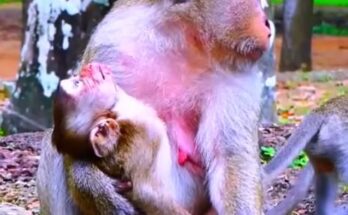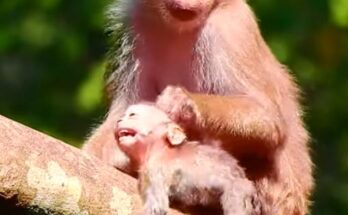In the heart of many forests and urban jungles, troops of monkeys thrive, their playful antics and complex social dynamics fascinating to observers. Yet behind their energetic demeanor lies a significant and growing challenge: hunger. As monkey populations increase, so too does the struggle to find enough food to sustain the entire troop. This battle against hunger is a daily reality, shaped by both environmental pressures and human influence.
Monkeys are highly social animals, living in structured groups led by dominant individuals. These troops rely heavily on the availability of natural resources like fruits, leaves, seeds, and insects. However, as their numbers grow, competition for these resources intensifies. In a healthy ecosystem, food sources typically replenish over time. But rapid troop expansion can outpace nature’s ability to keep up, leaving many monkeys undernourished and sparking internal conflicts over the dwindling supply.
One significant factor exacerbating the problem is habitat loss. Urbanization, deforestation, and agricultural expansion reduce the natural food sources that monkeys depend on. As forests shrink, troops are often forced to migrate closer to human settlements in search of sustenance. This leads to a new set of challenges. While monkeys may raid farms or scavenge from trash bins, these food sources are unreliable and often unhealthy, providing little of the balanced nutrition they need. In some cases, monkeys grow dependent on human handouts, which, though well-intentioned, can lead to long-term problems such as malnutrition, disease, and increased human-animal conflict.
For conservationists and wildlife managers, the challenge lies in balancing the well-being of the monkeys with the health of their ecosystems. Several strategies have been developed to tackle this issue. Habitat restoration projects aim to replant native trees and plants, providing sustainable food sources and encouraging natural foraging behaviors. Additionally, wildlife corridors can be established to connect fragmented habitats, giving monkey troops access to a wider range of food and reducing competition in overcrowded areas.
Another approach involves population control. In some cases, humane sterilization programs are implemented to manage troop sizes and prevent overpopulation. While controversial, these programs can ease pressure on limited food resources and improve the overall health of the troop.
Education and community involvement also play a critical role. By raising awareness about the consequences of feeding monkeys junk food or encroaching on their habitats, local populations can become allies in conservation efforts. Programs that promote coexistence and discourage harmful feeding practices help foster healthier, more self-sufficient monkey troops.
Ultimately, battling hunger in a growing monkey troop is about more than just finding enough food—it’s about creating a sustainable balance between the monkeys, their environment, and the human communities they often intersect with. By addressing the root causes of hunger, from habitat degradation to overpopulation, we can help ensure that these remarkable creatures continue to thrive without tipping the scales of their delicate ecosystems.


